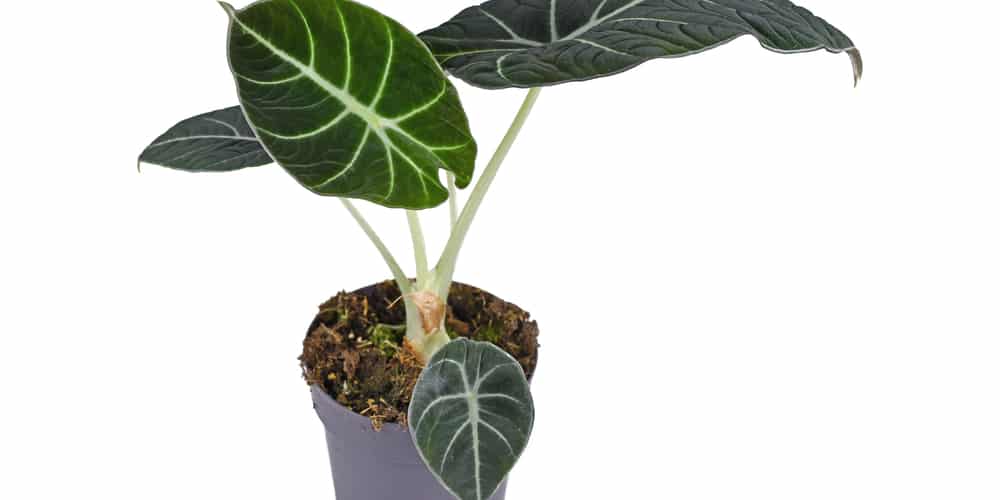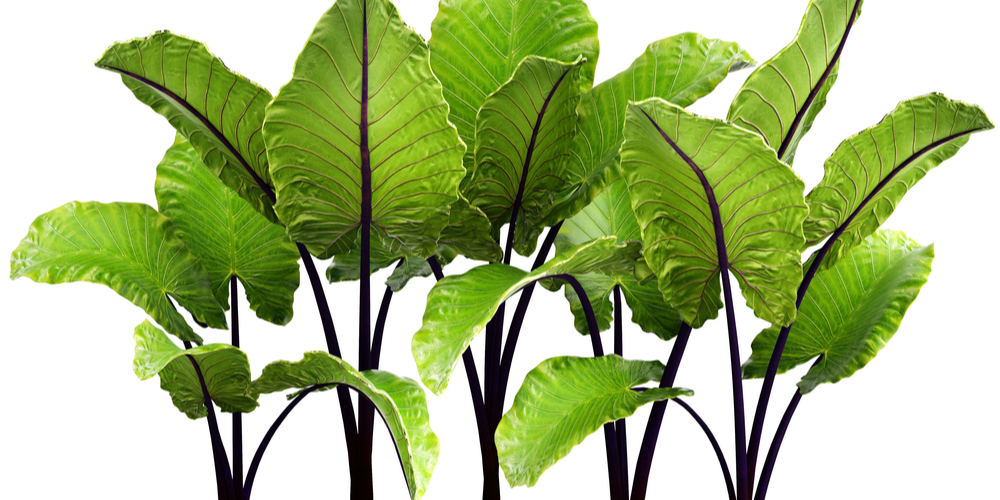An alocasia is a common houseplant derived from parts of Asia and Australia. This plant is commonly called elephant ears or African mask. It is widely known for its large dark green leaves with cream-colored veining. Some species of Alocasia plants can have leaves up to three feet long. There are around 80 different species of this plant, and many of those in the home are actually a type of hybrid. Although this plant has different variants, the care is generally the same. Let’s look at the best type of Alocasia soil mixture.
What Type of Soil Mixture Should You Use with an Alocasia?
The first step to plant care is ensuring proper soil. With the plant originating from tropical and subtropical areas, alocasia plants require soil that is full of nutrients, well aerated, and retains moisture while also being well-draining. Another thing to consider is the pH levels of the soil.
PH Levels of the Soil
When creating a potting soil mix, it’s essential to have a pH meter to evaluate your soil levels properly. Alocasia plants require slightly acidic levels in the soil. The levels can be anywhere between a pH range of 5.5- 6.5. Commercial potting mixes bought in a garden center usually meet these minimum requirements for pH levels.
Aerated Soil
Aerated soil isn’t packed in tight and prevents the roots from strangling. Without tight soil, the roots can better develop and expand. Without proper air movement, a fungus can have more opportunities to grow, possibly causing the plant to rot.
Things that someone can add to soil to improve airflow are:
- coconut coir
- orchid bark
- peat moss
- perlite
Fertile Soil
In general, regular potting soil will be sufficient. As with most house plants, they benefit from getting extra fertilizer once a month during the months from spring through fall. Alocasias require rich, nutrient-dense soil, so it’s recommended to include organic matter in the mix if possible.
You can add the following things to the soil to improve the nutrient content.
- coco-coir
- peat
- shredded leaves
- compost
Using compost in the mix adds natural moisture to the soil without adding excess water. These plants are susceptible to over-watering, so ensuring proper drainage is essential.
Well Draining Soil
With alocasia plants, it is vital to have good drainage in the soil. Too much water can promote mold and cause the roots or base of the plant to rot. If choosing pre-made potting soil, ensure it does not have crystals that hold moisture.
When adding organic matter to the soil, the following list contains some things you can add to help improve drainage.
- Perlite
- Peat
- Coco-coir
- Vermiculite
- Pumice
- Sand
- Perlite
- Wood chips
They like soil to be a little more on the dry side but require humidity. Finding a good balance with the moisture in the soil is key.
Watering Alocasia Plants
Alocasia plants like drier soil but still need to have high humidity. It may not make sense, but that’s why aerated, and well-draining soil is essential. These plants like to have time to dry out and do not like having swampy soil.
It’s time to water the alocasia when the soil’s top 2” -3” is dry. During the winter months, when the plant goes into a dormant stage and isn’t actively growing, it will require less water. Avoid over-watering the alocasia during this time to help avoid problems with your plant and its soil.
Signs of Bad Soil
Unfortunately, when signs of bad soil may be obvious, it may be too late to do anything about it. Here are some signs that something isn’t quite right with the alocasia’s soil.
- Brown leaves
- Slow growth
- Yellow leaves
- Wilting leaves
- Bad smelling soil
- Fungal growth on soil or plant
- Root rotting
- Mushy stem/leaves
If dealing with root rot issues, there are a few steps you can take. If it’s in the early stages of the root rot, you may be able just to let the soil dry out and restart the watering routine to save the alocasia. If it’s beyond a simple drying out, trimming off any rotten roots and changing out the soil or fully re-potting the plant may be necessary.
Alocasia Soil Mixture: Final Thoughts
You can add multiple things to the soil to improve its quality, but most of the moisture can be controlled by how often the plant is watered and ensuring proper drainage in the pot being used. It’s essential to listen to your specific plant to know the care that it needs. Pay attention to the soil to know when to water it and when it may need a break from all that moisture.

